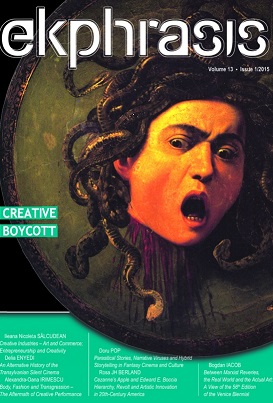Creative Industries – Art and Commerce; Entrepreneurship and Creativity
Creative Industries – Art and Commerce; Entrepreneurship and Creativity
Author(s): Ileana Nicoleta SălcudeanSubject(s): Theatre, Dance, Performing Arts
Published by: Universitatea Babeş-Bolyai, Facultatea de Teatru si Televiziune
Keywords: creative industries; entrepreneurship; Paintbrush Factory; Romania
Summary/Abstract: Recent research in cultural studies and the sociology of culture depicts an interest related to the different roles of culture in contemporary societies. Such views convey an important criticism on media policy, the changes in cultural production and its consumption in the current metropolis. O’Connor (O’Connor and Wynne 1996) indicates the resistance to cultural industries due to the undermining of the autonomy of art (especially in cities built on cultural tourism or based on institutions of high culture). Regarding aesthetics, a new hierarchy is created: a certain opposition to traditional aesthetics and, at the same time, a pluralization. Thus, T. Jowell (2004) speaks of a “complex culture”. The creative cultural industries were not visible in traditional cultural policies based on arts and heritage (Romania falling into this category in 1998, while attempting a strategy for culture that emphasized the patrimony, but at the expense of other cultural sectors – an attempt that was criticized by the Council of Europe in 1999). The need for self-financing cultural institutions highlighted the relevance of the creative industries. This paper will depict different views on this phenomenon in Romania, even regarding the definition and development of the creative industries. As a case study, I will investigate the Paintbrush Factory from Romania – a creative model of arts management, a cultural brand, and a unique organization form of arts management: a federation. My research aims to apply the four research categories introduced by Taylor and Hansen in 2005 for organizational aesthetics (intellectual analysis, instrumental issues, artistic form, and aesthetic aspects) as a methodological model for this case study.
Journal: Ekphrasis. Images, Cinema, Theory, Media
- Issue Year: 13/2015
- Issue No: 1
- Page Range: 10-25
- Page Count: 16

